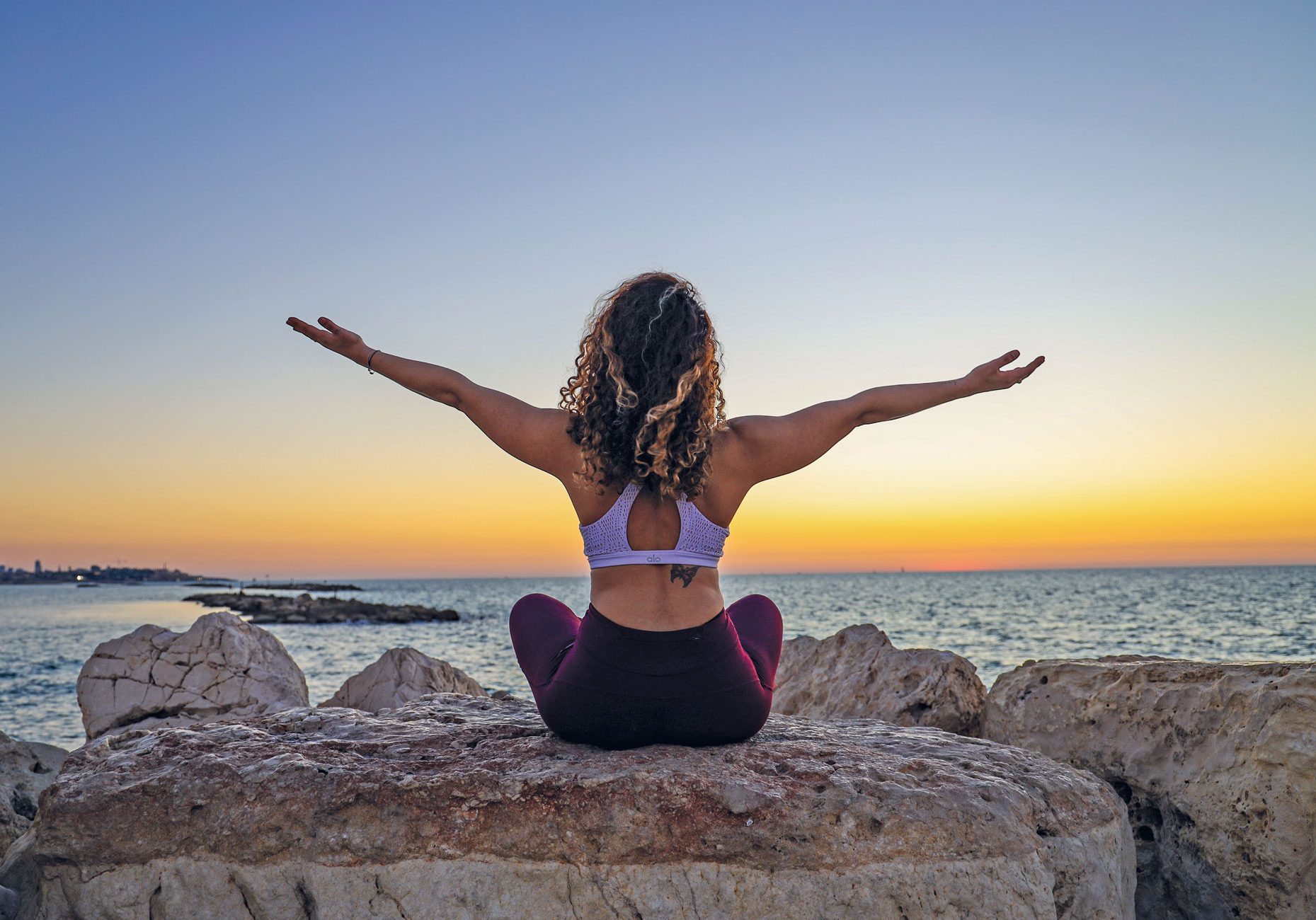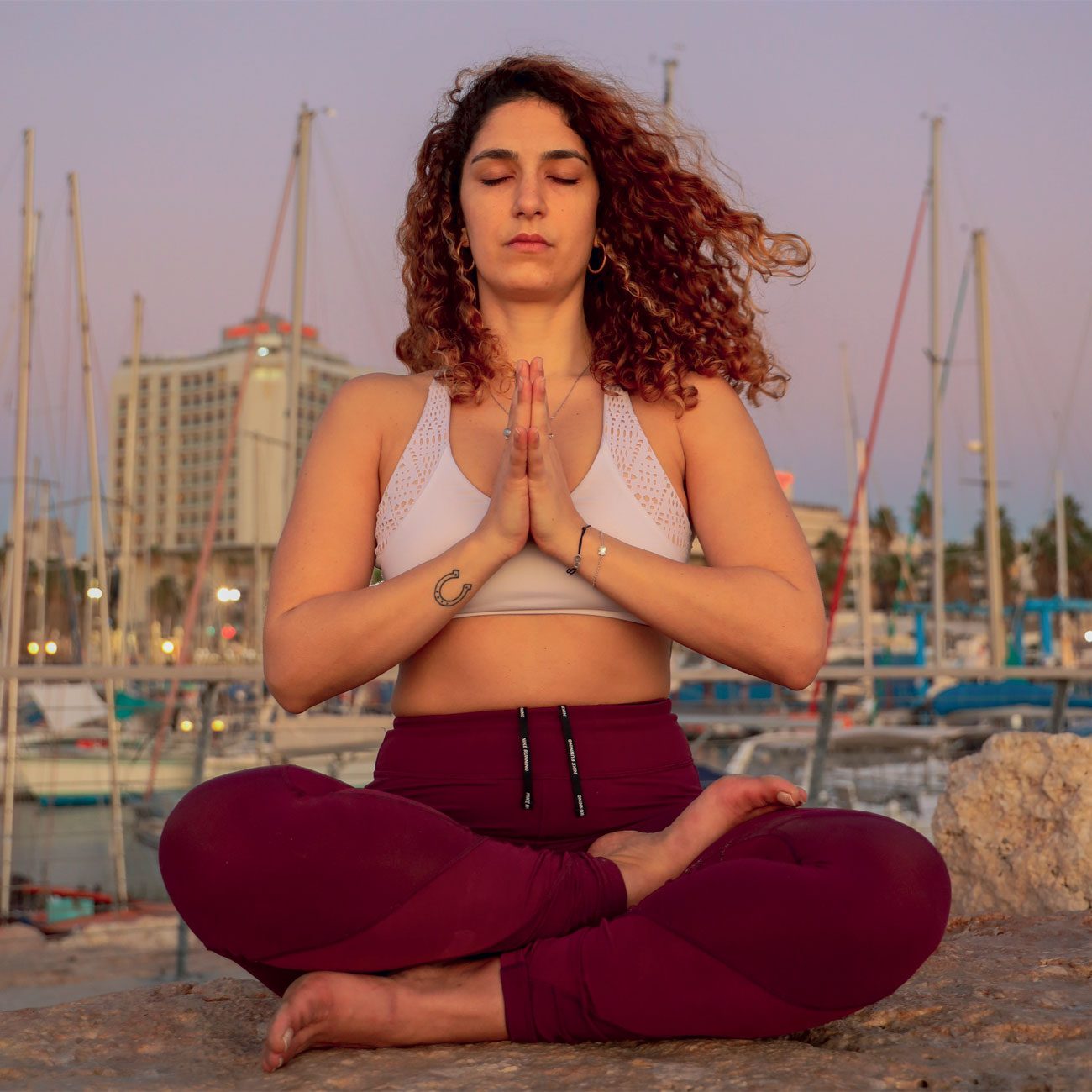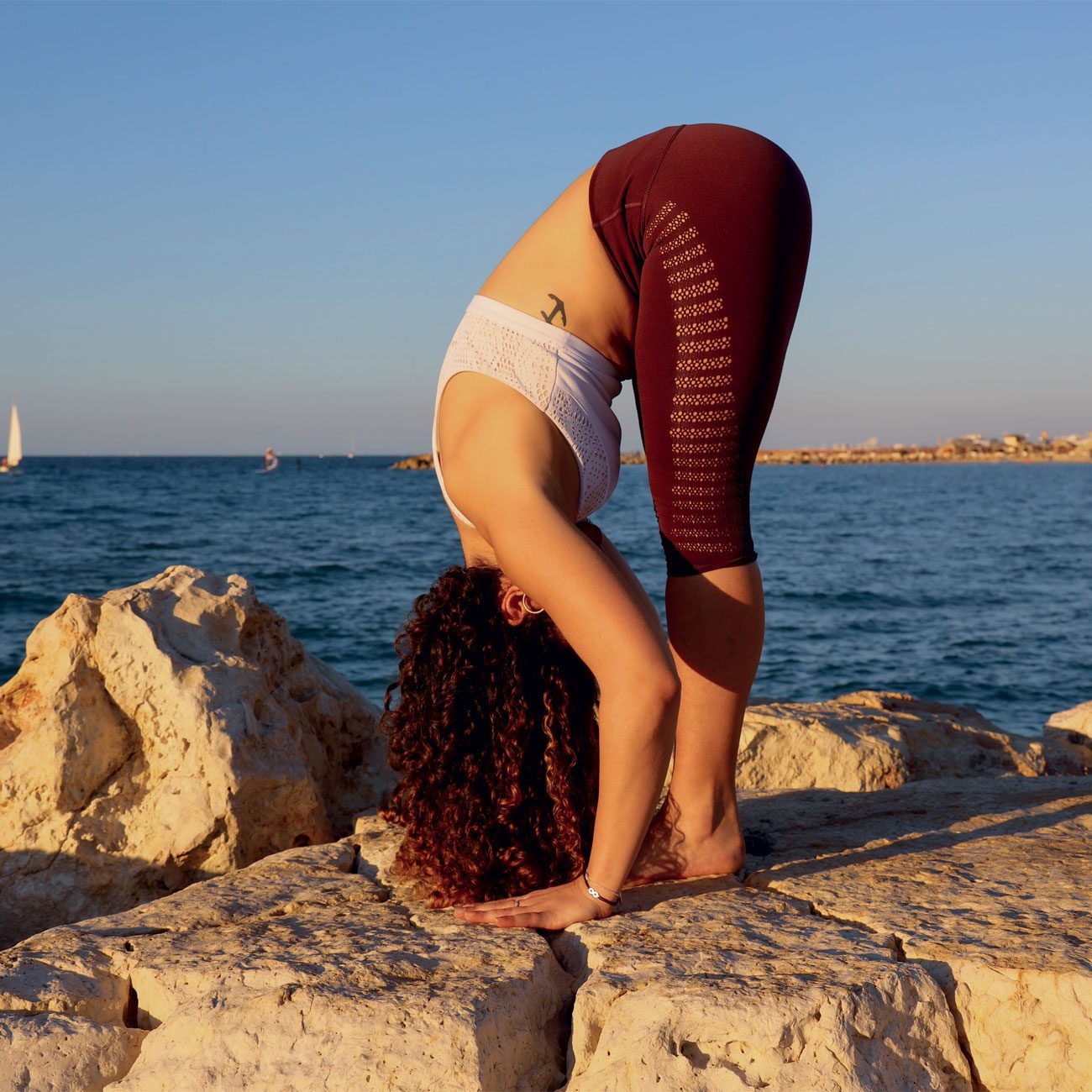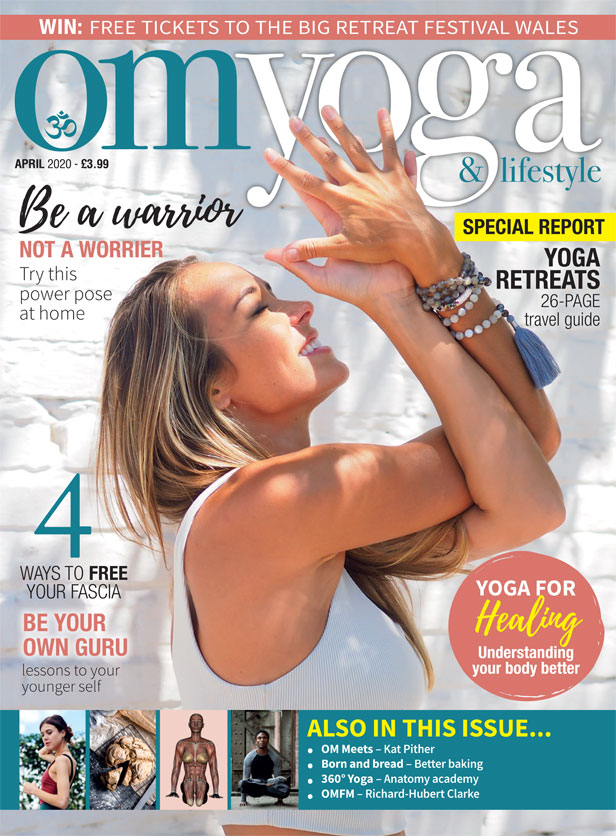
Yoga for healing and healing from yoga
Yoga can help us to understand our bodies better if we are sensitive enough to tune in to what it is telling us. By Mollie McClelland Morris
M any students take up yoga because of something amiss in the body. It could be general back pain, shoulder tension, or carpal tunnel syndrome from a desk job. Others have recent or historical injuries that continue to affect them. Some musculoskeletal conditions affect balance or range of movement, or cause pain. Yoga has an incredible capacity to heal the body, mind and spirit. As it becomes more popular, we are witnessing how many peoples lives are improved by their practice.
When yoga is focused on movement, mobility, awareness, and mindfulness, it can be very healing. However, yoga can mirror other aspects of our culture, where teachers and students value extremes, push themselves past safety, get overly goal oriented, or become aggressive with their practices. When this happens, it is possible that yoga initially helps an injury, but eventually causes injury or pain.
At the beginning of my classes, sometimes I tell students we will practice yoga without stretching. I get incredulous looks; people equate yoga with stretching. I do not mean we won’t be elongating muscle tissue. I mean that the goal is not to push to the end range of movement. We may explore our possibilities, and play with our fullest poses. But it is both my experience in my body (after years of aggressive stretching trying to improve flexibility) and being proven by contemporary science that pushing the body to the extremes is not an effective way to heal or improve. Let’s explore this a little.
How the body gets injured
There are two main types of injuries: traumatic and overuse injuries. Traumatic injuries are generally caused by excessive force (torque, compression, tension, shear) acting on the body. Overuse injuries result from low level forces that are not balanced in the body, and eventually weaken or damage tissues.
Humans are navigating forces all the time. Walking is an act of force absorption and redirection. Gravity acts on the body, pulling it down. The body adjusts with subconscious muscle activation, to keep itself upright. Tissues elongate to absorb compressive force, and then rebound. Think of a ball bouncing, when it hits the floor it flattens and widens, when it bounces, it narrows and lengthens. Our bodies respond like that too.
Right now, I am sitting (compression) on my foot, which is slightly twisted (torque). These forces are currently manageable, but over time could become uncomfortable. However, if more weight compressed my foot, it could get crushed. If my body weight fell onto my foot in this twisted position, I could sprain my ankle (a traumatic injury). An overuse injury might develop if I sat like this day after day, without balancing my feet through other positions and movements. Manageable forces create strength, resilience and flexibility. Unmanageable forces create injury.


Yoga in relation to health and injury
Yoga, as any movement form, has its own play with forces in the body. Our attitude towards how we practice can mitigate the forces or put us in danger.
If we are constantly pushing ourselves to the end of range of movement (commonly called stretching) and adding force (sinking into the hips, pushing on our legs, bouncing, having aggressive adjustments, etc.) we are putting the body at risk of both traumatic and overuse injuries.
Let’s take the example of a lunge. A lunge could be seen as an exaggerated step, with the legs further apart than normal. The two hip joints are doing opposing actions, and usually the back leg is in fairly extreme extension (the leg pulled backward with respect to the body). There are many forces at play. Gravity acts on the weight of the trunk. That weight or load is potentially distributed between the two legs. Or it
could be compressing heavily on a specific place in the body, like the lower back, pelvic floor or front of the hip joint of the back leg.
A healing attitude
Most of the language in yoga classes is poetic, sometimes flowery or metaphoric. But other times it reveals some unhelpful attitudes towards our bodies. We talk about certain kinds of poses as ‘hip openers’ or ‘heart openers’. This language implies a very two-dimensional action, like a door or a can, with two options, open or closed. Hip joints are ball and socket joints and do not ‘open’. It is more helpful to think of mobilisation,
lubrication and strengthening, rather than this almost surgical language.
Your mental attitude, not just body position, will determine how and where load is carried, and therefore the risk of injury. In the lunge example, tucking the tailbone will increase the pressure on the front of the hip joint. Imagining pushing away from the floor with your feet might minimise direct force, whereas thinking of sinking as deep as possible
might increase it. If you are disengaged mentally, the support and tone through the abdomen could collapse, adding strain to the lower back.
Thinking about ‘deep stretching’, or ‘opening the hip’ encourages us to add load to the muscle and connective tissue that is already near the end of its range of movement. This extreme is where injury, both traumatic and overuse, is common in yoga.
Preventing injury
So, when I suggest doing yoga without ‘stretching’, I don’t
mean eliminating elongating muscle tissue, or avoiding movement throughout our range. Both of those actions are great. I encourage students to explore poses without overloading the joints in compromising ways. Many yogis don’t know that is possible. If they are not pushing themselves ‘deeper’ into their stretches, then what to ‘do’ instead?
It is being demonstrated scientifically that better healing, as well as development of strength and flexibility, happen when you work in the body’s mid-range. This may not feel like stretching, but will feel comfortable and stable, and hopefully spacious, engaged, responsive and elastic. This is, possibly, what the original yoga practices were intended to be.
Many yogis treat injuries as a hindrance to their practice, but they are not. Injuries can be occasions when we learn different techniques, challenge our own mental conditioning, or explore subtle internal sensations. When we stop pushing our body to extremes, we can cultivate different energies in the body. The practice becomes an expression of our range, both physical range of movement and our own range of textures, sensations and experiences in the body-mind. By exploring that range, our practice takes us to deeper awareness and to the possibility of long-term healing.
Healing from injury
Whether or not your injury comes specifically from your yoga practice, there are a few strategies to facilitate healing.
1. If you feel pain, back off, change something or don’t do the particular movement. Some people believe that pain will go away if we ignore or push through. Generally that is not the case.
2. Stop doing the movement that causes pain, or modify it until it is not painful. For example: if you have hamstring insertion pain (around your sit bones) when you do forward bends, only fold to a range where you are pain free. Then research different movement techniques for forward bends. If your teacher suggests a certain technique, but you still have pain, you might have to explore other perspectives.
3. Use positive mental language. Instead of focusing on pain, think about your body as mobile, supple, and your movement feeling good. It really helps!
4. Find movement pathways that feel good. I used to have a mysterious, painful click in my shoulder during the first arm lift of sun salutations. I observed that if I angled my arms forward, I didn’t have the pain. And
after a while, that click disappeared.
5. Work in your mid range: do not ‘stretch’. Try to explore different kinds of sensations in your body besides stretch (buoyancy, power, balance etc.)
MINDFULNESS OF PAIN
A process for mindfulness of pain, and cultivating a pain-free approach to yoga: listening for ‘Yes’ and ‘No’.
Many teachers share similar processes, articulated in different ways (I first encountered this with Julie Martin of Brahmani Yoga). You can do this at any point in your practice. During an intuitive flow, or improvised session, it can be very interesting, but it can be done in any series.
A place to start might be in Cat/ Cow, progressing to Downward Dog, Plank and Upward Dog.
Start slowly with simple back and forth movements, in a small movement range. Notice what your body likes, what your body says ‘Yes’ to. Move into a fuller range, by following the feeling of ‘Yes, my body loves this’. Progressively get more expansive, or evolve to more complex poses. Keep following the ‘Yes’ in your body, but also listen (internally) for when your body says ‘No’. When you feel a sense of ‘No’, do not judge or question it, just adapt your movement so you feel a ‘Yes’.
The ‘No’s’ we feel in the body are sometimes quiet, and sometimes loud and clear. When you have a sensation that you aren’t sure about, come out of that movement or range.
What is your feeling when you come out? If it is any form of relief, then your body was saying ‘No’. You may not know all the time. That is fine, it is part of your self-discovery.
An important distinction to make is the difference between challenge, and ‘No’. I practice poses that require determination and challenge my strength and capacity. I enjoy staying longer than is natural or comfortable. That is different than pushing past a ‘No’. If you are unsure, treat it as a ‘No’ for now, until you feel more sensitive and confident in your ability to listen to yourself.
Find out more about Mollie McClelland Morris at: molliemorris.com
Or follow her on Instagram: @mollieyoga




